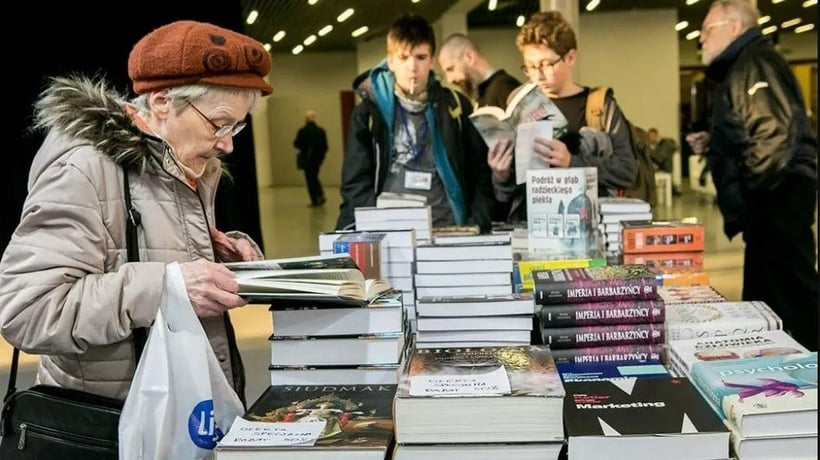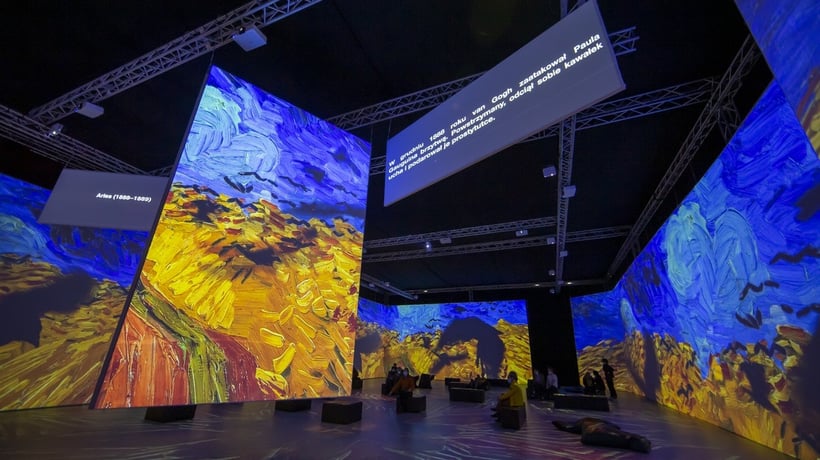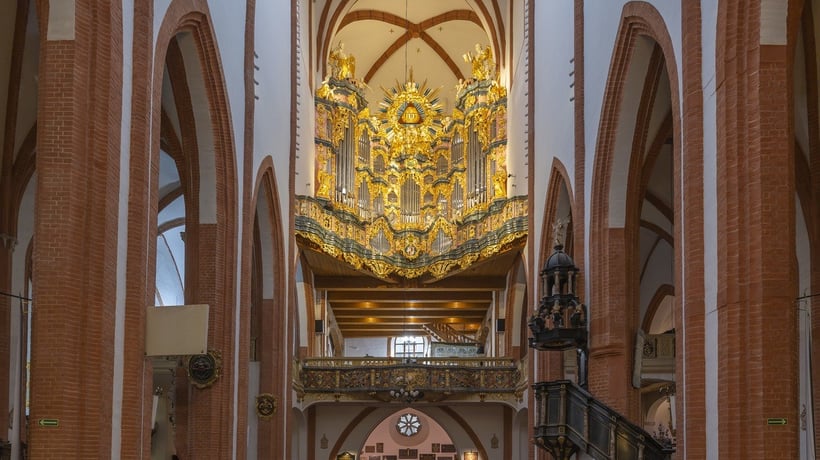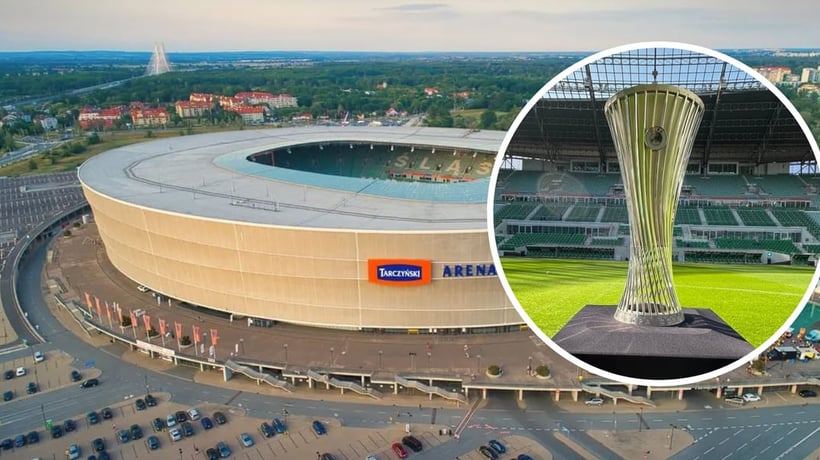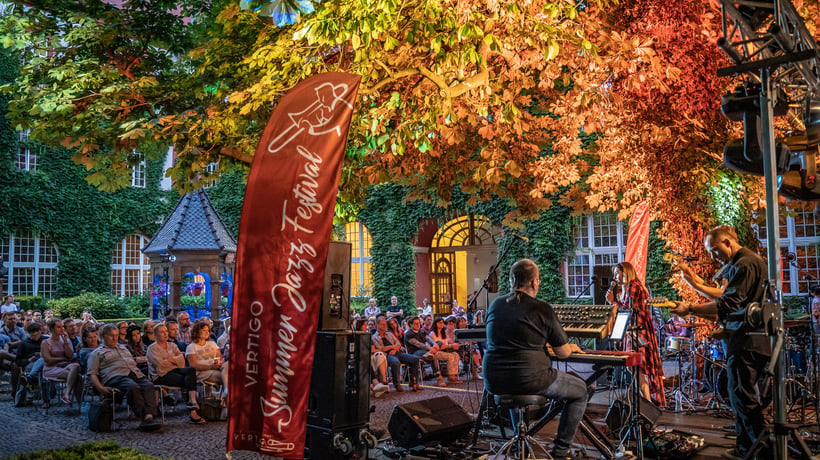Two eminent experts in fashion history, Małgorzata Możdżyńska-Nawotka from the National Museum in Wroclaw and Joanna Regina Kowalska from the National Museum in Krakow, have designed an exhibition that is nowhere short of dazzling. These dresses, overcoats, skirt suits, lady's jackets, jackets, anoraks and jumpsuits were hardly to be seen in the streets of Poland. They were like dreams that Polish women aspired to at the time of ubiquitous shortages. And that was anything but easy: you had to obtain a good fabric, have a trusted tailor or be able to make your own clothes and have your own sewing machine.
Fashion was determined by social class: the elite followed latest trends from Paris, while ordinary mortal were left to their own devices and ideas, which are now called creativity. The exhibition made jointly by the branches of the National Museum in Krakow and Warsaw takes you on a journey across the history of fashion in Communist Poland spanning the end of World War II and the collapse of the Communist regime in 1989.
Parachute blouses
"Immediately after the war, fashion was still influenced by pre-war times. Paradoxically, New Look by Christian Dior would evolve as as a response to wartime hardship. The designer came up with a completely new female figure combining a minuscule and close-fitting women's jacket and a heavily flared skirt. No one would afford to use that much fabric during the war! Although the style provoked critical responses in Poland, a number of fashionable dressers would nonetheless blindly follow the latest trends from Paris."
This is how people in the street would manage. The exhibition celebrates women's creativity, as they would use parachute silk in countless ways to make dresses and aviation escape maps to create fancy blouses. They would even use parachute strings to crochet a jacquard jumper. A dressing gown from UNRRA supplies would be transformed into a black floral evening dress.
Designers' time
The late 1950s, when Władysław Gomułka was appointed First Secretary of the United Workers' Party, were marked by tailor-made evening dresses and the emergence of a mini, which Polish women were very quick to embrace. With Edward Gierek coming into power in the 1970s, the state-owned clothing labels became prosperous enough to take on their own fashion designers. Grażyna Hase, Jerzy Antkowiak, Barbara Hoff are but a few names that stand for the fashion of the time. The period was also marked by mass production and first numerous manifestations of individuality. Just have a quick peek at the outfits of Maryla Rodowicz', a famous Polish singer. Some of them are featured at the exhibition.
Collections from Moda Polska, Cora, Telimena and Dany would dazzle with a variety of designs. That being said, the majority of them were unavailable to ordinary users. The women were not able to afford them, and the majority of the collections were produced for export. The shops would offer export rejects only. Equally expensive were some of the dazzling dresses from hand-painted silk made in Milanówek, which are considered to be unique works of art.
It was obvious that fashionable designs were unavailable at the time. The shortages could not simply be justified by "haute couture" because the outfits were produced by the state. Women could only dream when they saw soft leather dresses or finely embroidered tunics. Poland had both great designs and exquisite designers. If only their ideas had reached the ordinary users, Polish people would have been the best looking nation in Central Europe. The first person to spread fashion was Barbara Hoff, who set Poland's first pret-a-porter brand in the 1980s. The exhibition showcases Hoff's little black dresses and jumpsuits that the entire Poland would seek to buy at the Domy Handlowe Centrum (a department store) in Warsaw. Fashionable, though perhaps only out of necessity, crocheted jumpers and dresses are also featured at the exhibition.
Mind-blowing shoes
Fashion is also about accessories. Communist Poland was known for its great designers and craftsmen. Brunon Kamiński designed real artworks in the 1950s, including aeroplane-shaped shoes or stilettos designed specifically to celebrate the 20th anniversary of Communist Poland. The former were awarded a prize at the World Shoe Expo in Munich.
"Following its Krakow premiere, this edition of "All the Rage" is a second one, and it makes an attempt to examine fashion as an area of artistic creation and designers' creativity," says Małgorzata Możdżyńska-Nawotka. "Our focus is not on street fashion. Instead, we showcase designs that made fancy dressers tick.
Wedding dresses are a separate topic, as they describe the evolution of female figure from the late 1940s until the 1980s. The visitors are also in for a documentary by Ryszard Horowitz, who made a coverage of Barbara Hoff's fashion show in 1988."
The exhibition "All the Rage. Fashion in Communist Poland" is available to the public from 17 May to 28 August.
The exhibition will be celebrated with a catalogue designed as a fashion magazine.
![„All the Rage. Fashion in Communist Poland” at National Museum [PHOTOS, VIDEO]](https://www.wroclaw.pl/cdn-cgi/image/w=1200,h=600,fit=crop,f=avif/en/files/news/16238/moda-prl-030.jpg)

